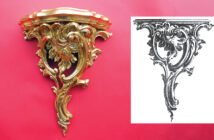Extreme Lovespoon Carving:
Dave Western takes a look at the extraordinary lengths people will go to create a lovespoon.
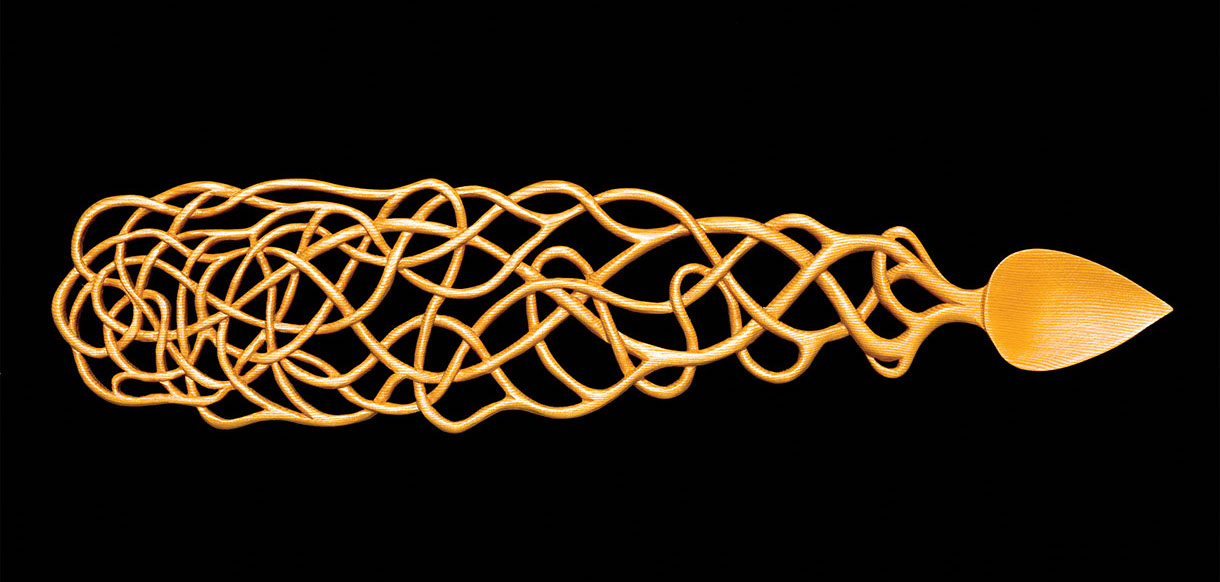
Dave Western takes a look at the extraordinary lengths people will go to create a lovespoon
By its nature, lovespoon carving is an exuberant endeavour and, by making them, young men have, for centuries, attempted to impress the young women they fancied with feats of woodcarving derring-do. Not only was each of these passionate carvers trying to win the attention of the girl, they were also trying mightily to impress the girl’s family and beat back any amorous rivals they may have had to contend with. There was much at stake and a skilfully designed and dexterously carved lovespoon could go a long way towards guaranteeing a positive outcome.
Although things are different nowadays, with lovespoons no longer being given for the same reasons they were in the past, there is still a desire among serious lovespoon carvers to push boundaries, test skills and materials and to design ever more beautiful pieces. I would like to highlight a number of my own designs as well as a multitude from fellow lovespoon carvers who have also taken the craft to the extreme.
Lovespoon carving is an enterprise of endless possibility that offers limitless opportunity for design experimentation and for carving advancement. It is my sincere hope that seeing the following spoons will inspire you to throw caution to the wind and undertake your own exciting adventure in lovespoon carving.
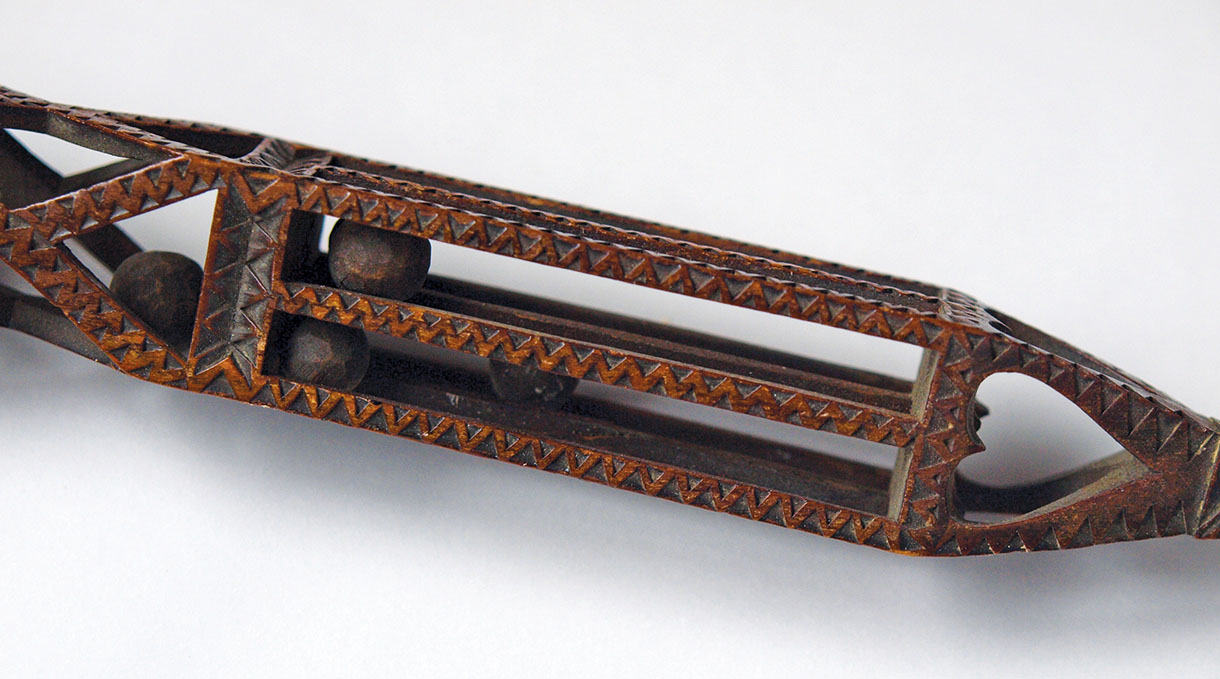
Carvers’ tricks such as the ball in cage are taken to new heights on this antique lovespoon with a unique four-cage arrangement
Extreme history
From the earliest days of lovespoon carving, it seems that carvers were constantly on the lookout for ways to elevate their carvings above the competition. On Welsh spoons in particular, these innovations largely occurred in one of two ways. In the first, long, slender handles were often decorated with a riot of chain links, balls in cages, swivels and other classic carvers’ tricks. These made for spectacularly technical spoons, but left little room for symbolic decoration. Carvers began looking for ways to include more detail and the outcome of this search was broadened and enlarged handles which took on the appearance of panels.
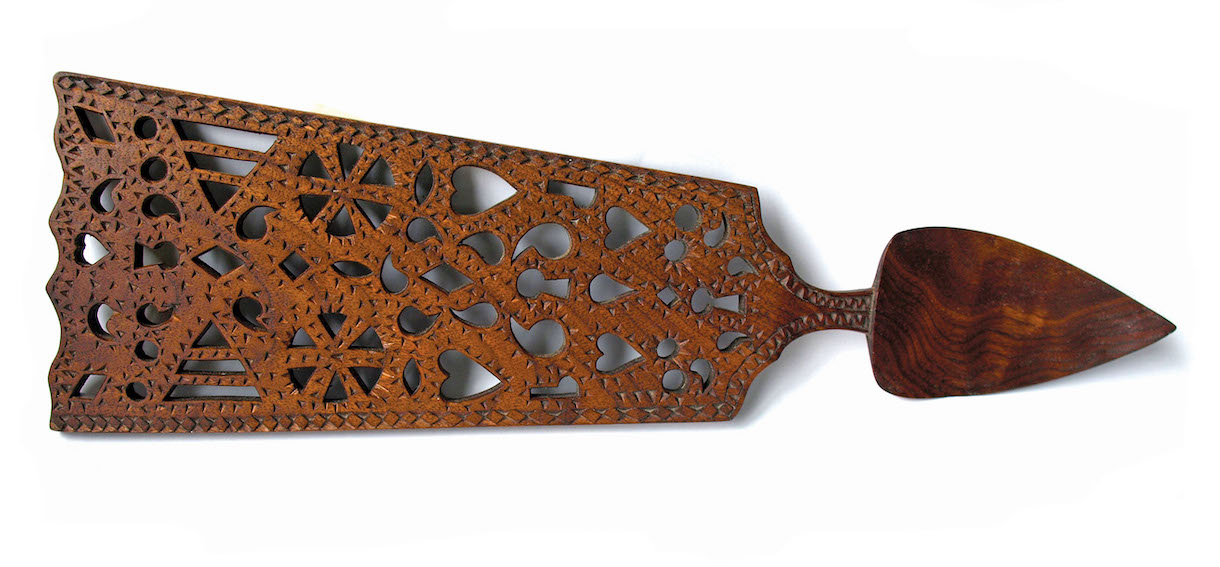
The broad-panel handle is seen at its most extreme in this historical copy, with familiar and incomprehensible symbols covering the entire surface of the handle
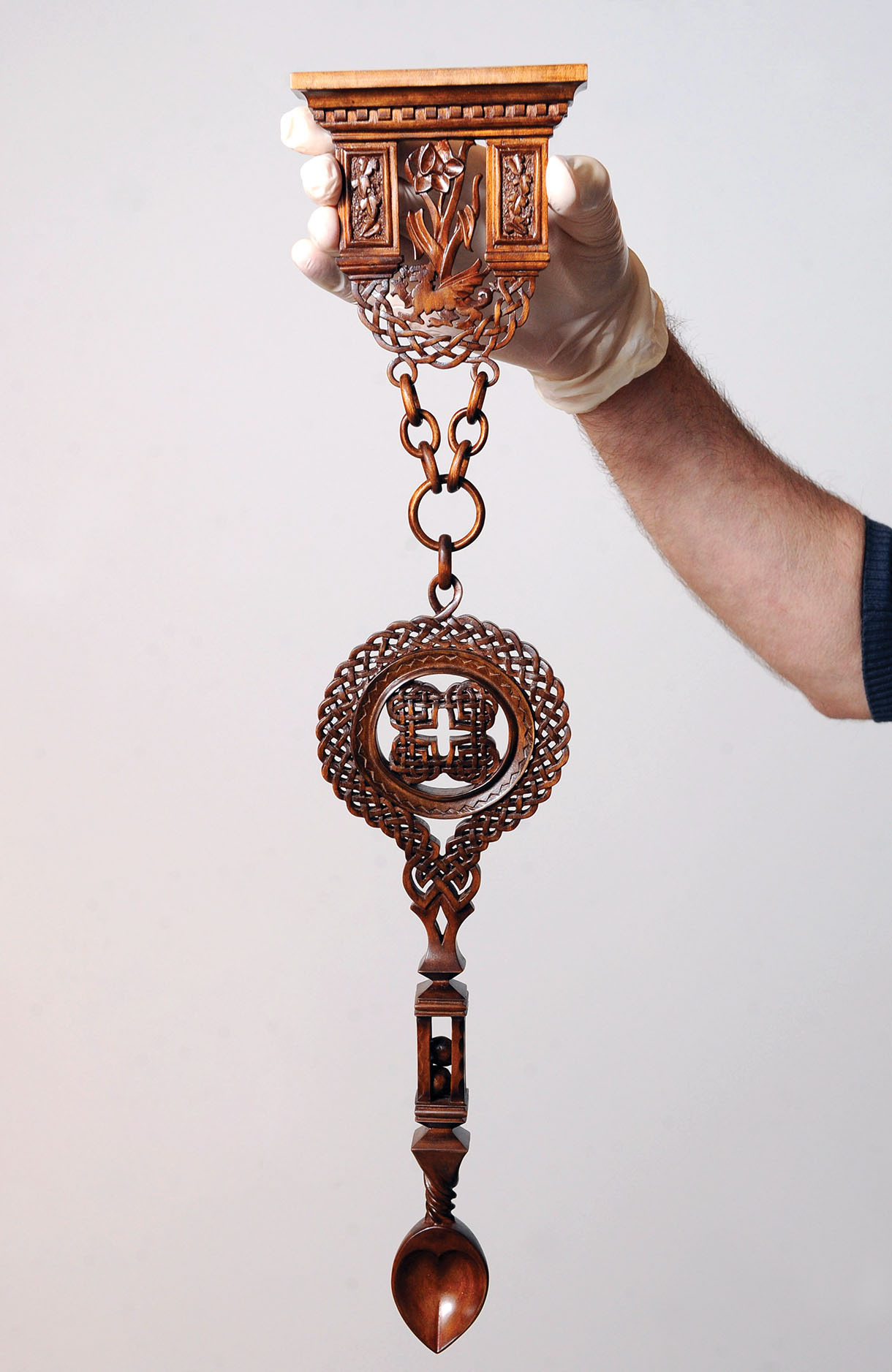
In these examples, Llewellyn elegantly fuses traditional straight spoon styling with the broad panel style
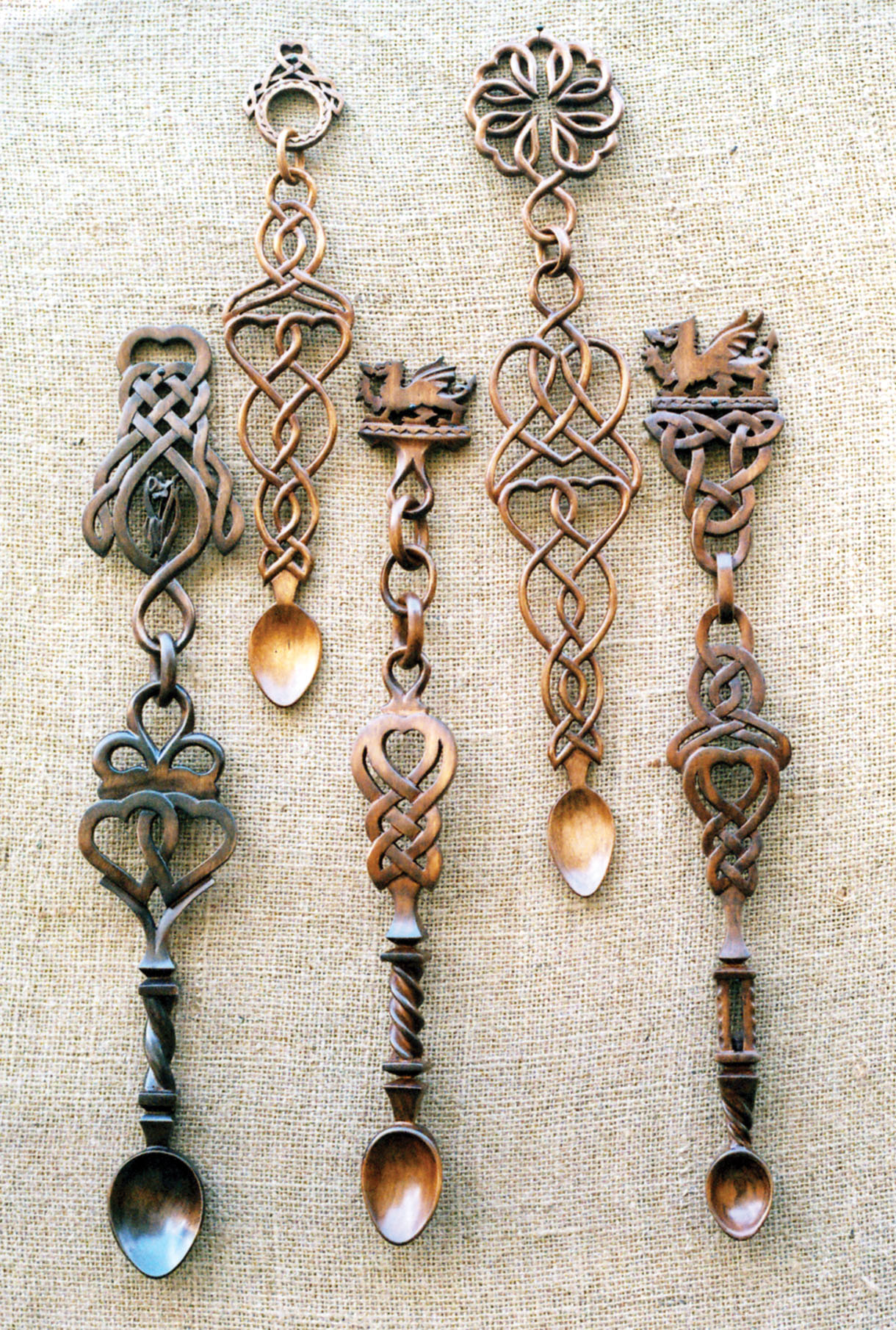
The addition of Celtic knotwork gives the spoons a bit of an ‘old world’ feel
As these panels grew in size, carvers could take advantage of the increased surface area both to add ever-more romantic imagery and to show off a range of carving skills.
In our modern era, much of the eclecticism of earlier lovespoon carving has been replaced by more straightforward design that is easier to machine and mass produce. This has lead to a mistaken belief that traditional lovespoon carving was a simpler and cruder affair than it actually was.
Trained cabinetmaker, Siôn Llewellyn, rectifies this masterfully by straddling the historic and the modern. Llewellyn’s designs often incorporate hints of his joinery background with elegant frames and panels enveloped in rich Celtic knotwork. Although Celtic knotwork is virtually unknown on historic examples, in Llewellyn’s skilled hands it appears as historically believable as it is beautiful.
Carver Bob Tinsley takes ‘old world’ in another extreme direction through his dedication to hand carving. Using only hand tools and completely eschewing power, Bob’s spoons may utilise many modern design features, but they are hardcore old school.
From shaping the blank down by axe, to carving using only knives and finishing with scrapers and files, Bob’s spoons represent extreme devotion to traditional hand craft.
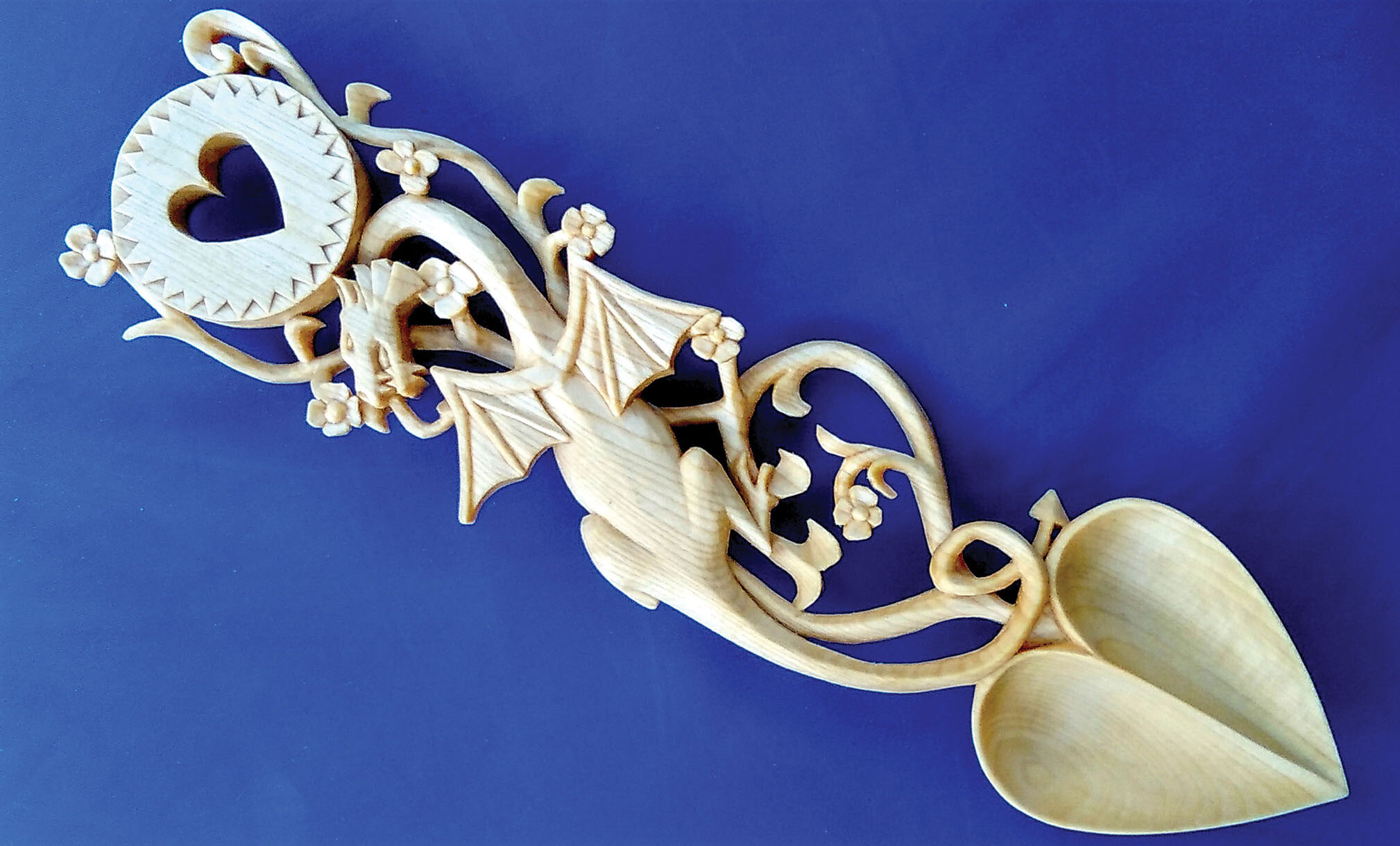
Tinsley carves his lovespoons entirely by hand and they amply illustrate what is possible with extreme patience, dedication and hand skill
 Extreme symbolism
Extreme symbolism
When it comes to the time-honoured lovespoon tradition of using symbols to represent romantic notions, nobody can tell a story quite like longtime English lovespoon carver Ralph Hentall. Renowned for his elaborate and highly detailed designs, Hentall carves spoons which are masterpieces of symbolism and storytelling. Although it has been suggested that a young girl of yore could ‘read’ a lovespoon and understand the secret message of love it told, it is more likely that she would have simply recognised a small number of well-known symbols, such as hearts and diamonds. It is only in our modern era that larger numbers of symbols have become ‘traditional’, as most are never seen on historical examples. Hentall’s spoons, however, are carved as symbolic stories, with every detail having personal relevance to the person receiving it. In this way he manages to forge a link between the traditional symbols of the lovespoon and a more modern concept of the spoon as a vehicle by which a person’s tale can be told.
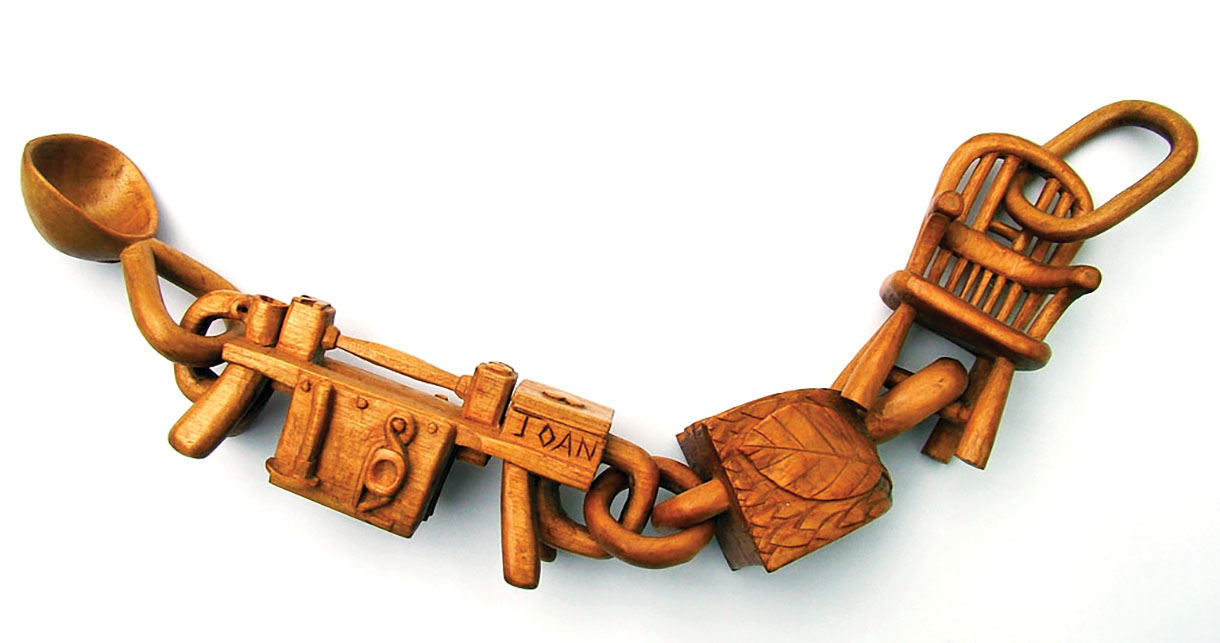
Ralph Hentall’s imaginative and carefully crafted lovespoons represent the apex of detailed storytelling in wood
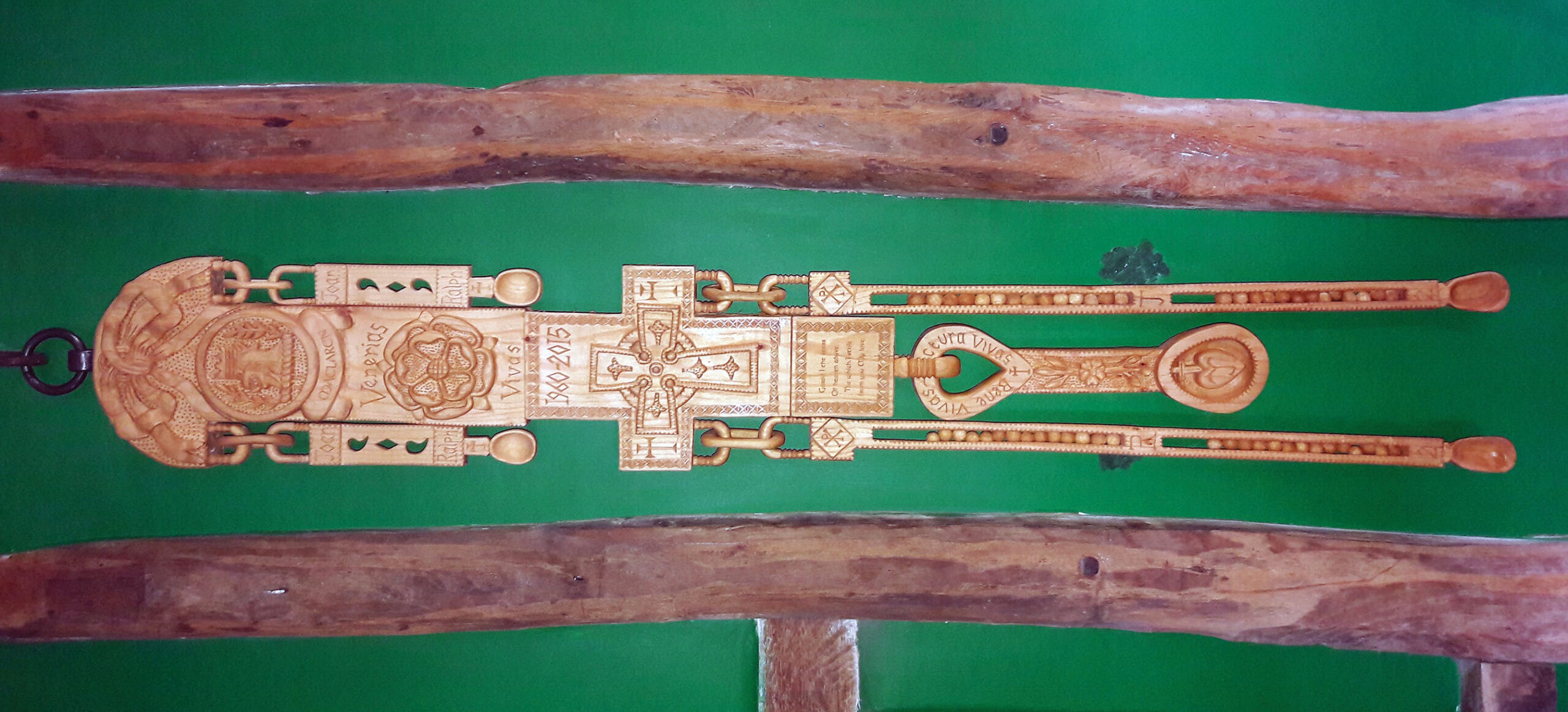
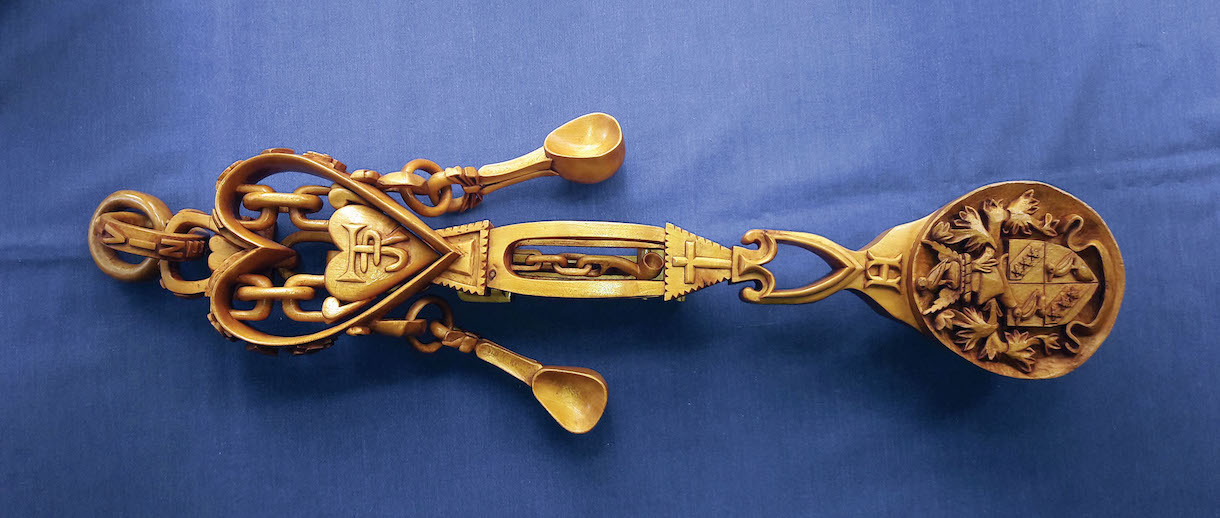 Extreme eccentricity
Extreme eccentricity
The first lovespoon-maker of the modern era to really embrace the eccentricity of varied styles and designs was Welsh carver Mike Davies. Davies’ background as a trained artist is given free rein in
his designs and he was the first to carve lovespoons that were truly works of art as well as emotive love tokens. His mastery of both technical carving and artistic design has resulted in a number of spectacular designs ranging from traditional, to Celtic, to more avant-garde works.
It was Mike Davies who inspired me to take on the challenge of lovespoon carving and whose designs opened the door for me to realise the vast potential of this most endearing tradition. When I design a spoon, I try to tell my clients’ life stories using imagery that is important to them. Sometimes the imagery is obvious, other times extremely esoteric, but it is always meaningful. Like my fellow carvers, I enjoy a variety of art styles and relish the challenge of making them work in wood. As per tradition, my spoons are always carved from a single piece of wood.
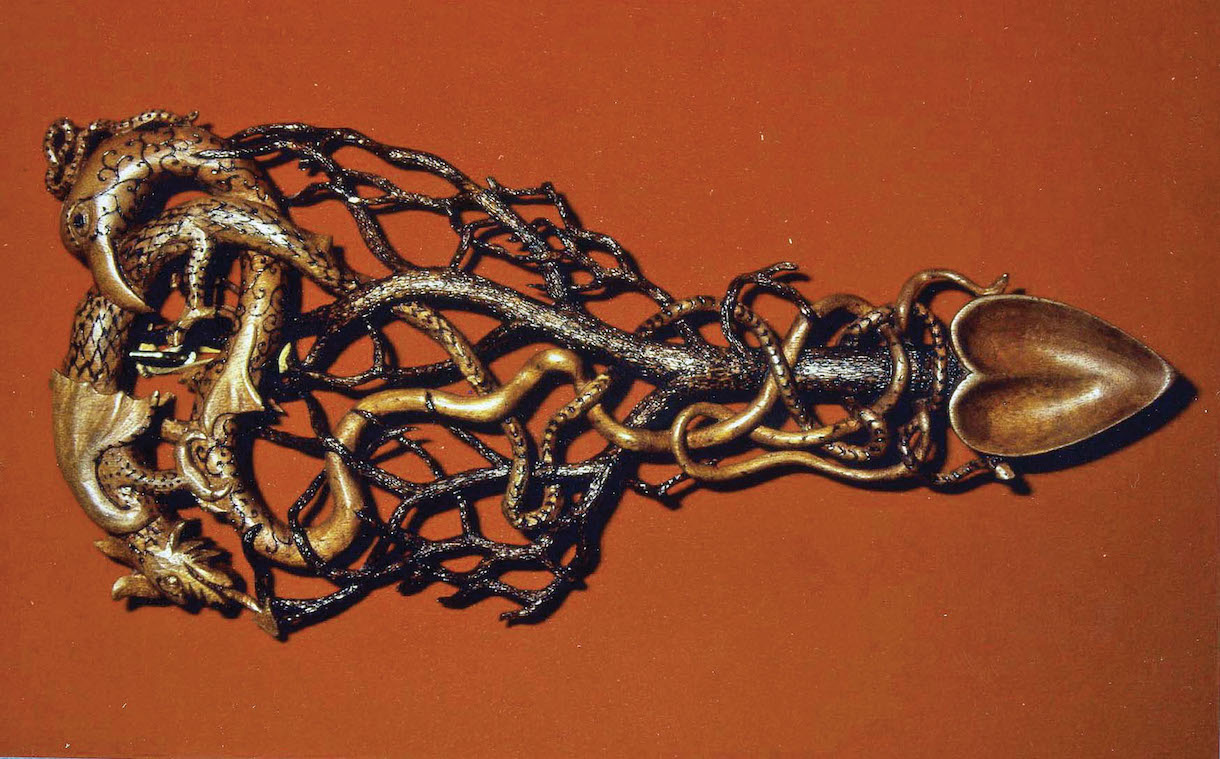
Revelation Tree of Life (which took several hundred hours to carve) and the Royal Lovespoon carved for Her Majesty Queen Elizabeth dramatically illustrate the wide variety of Davies’ designs and the quality of his workmanship
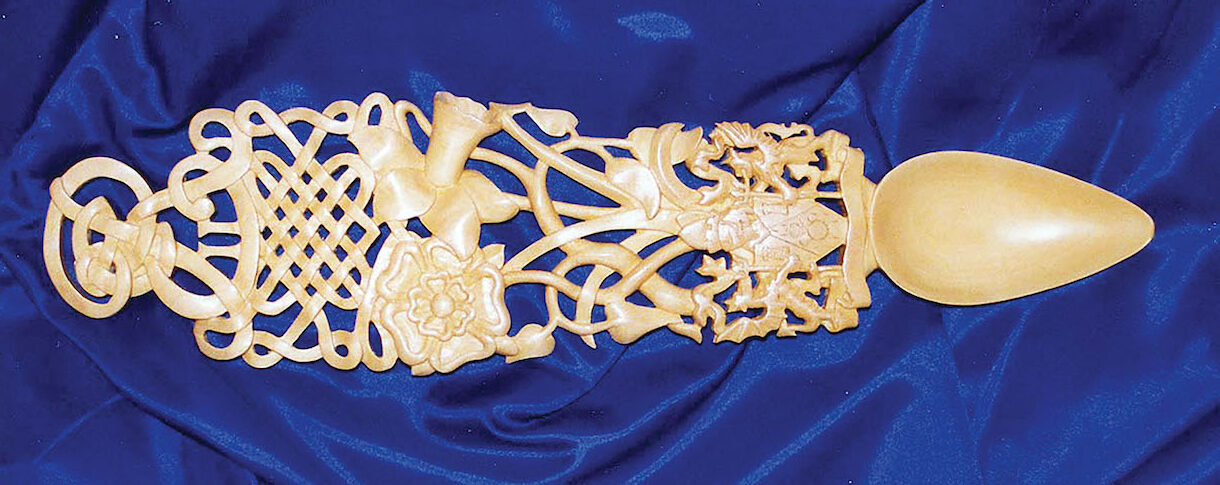
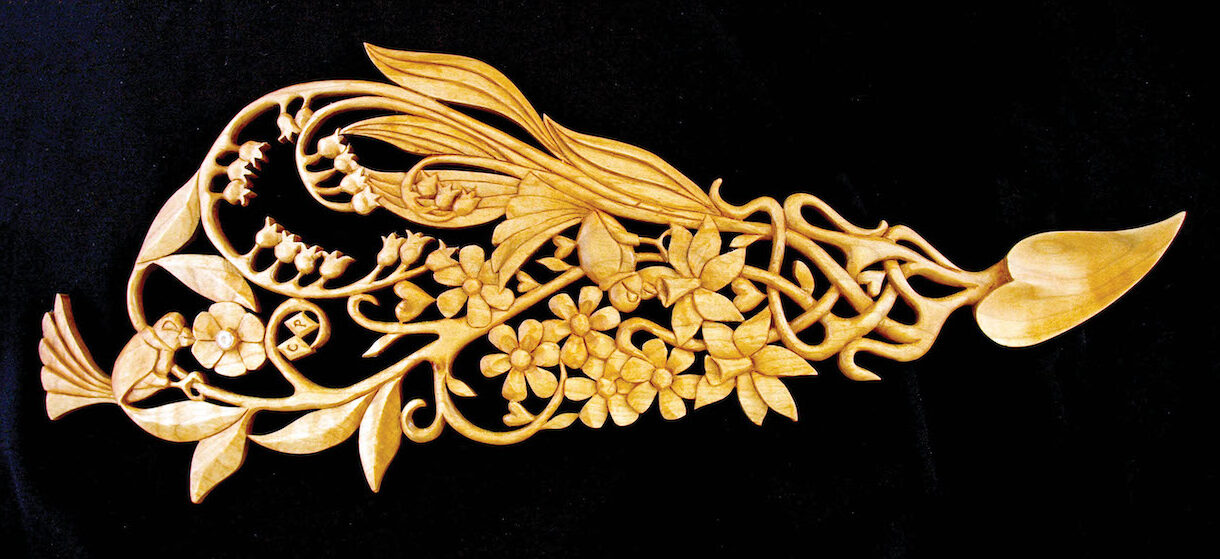
Dave Western’s lovespoons embrace diverse art styles, unusually figured woods, occasional inlays and a variety of carving techniques
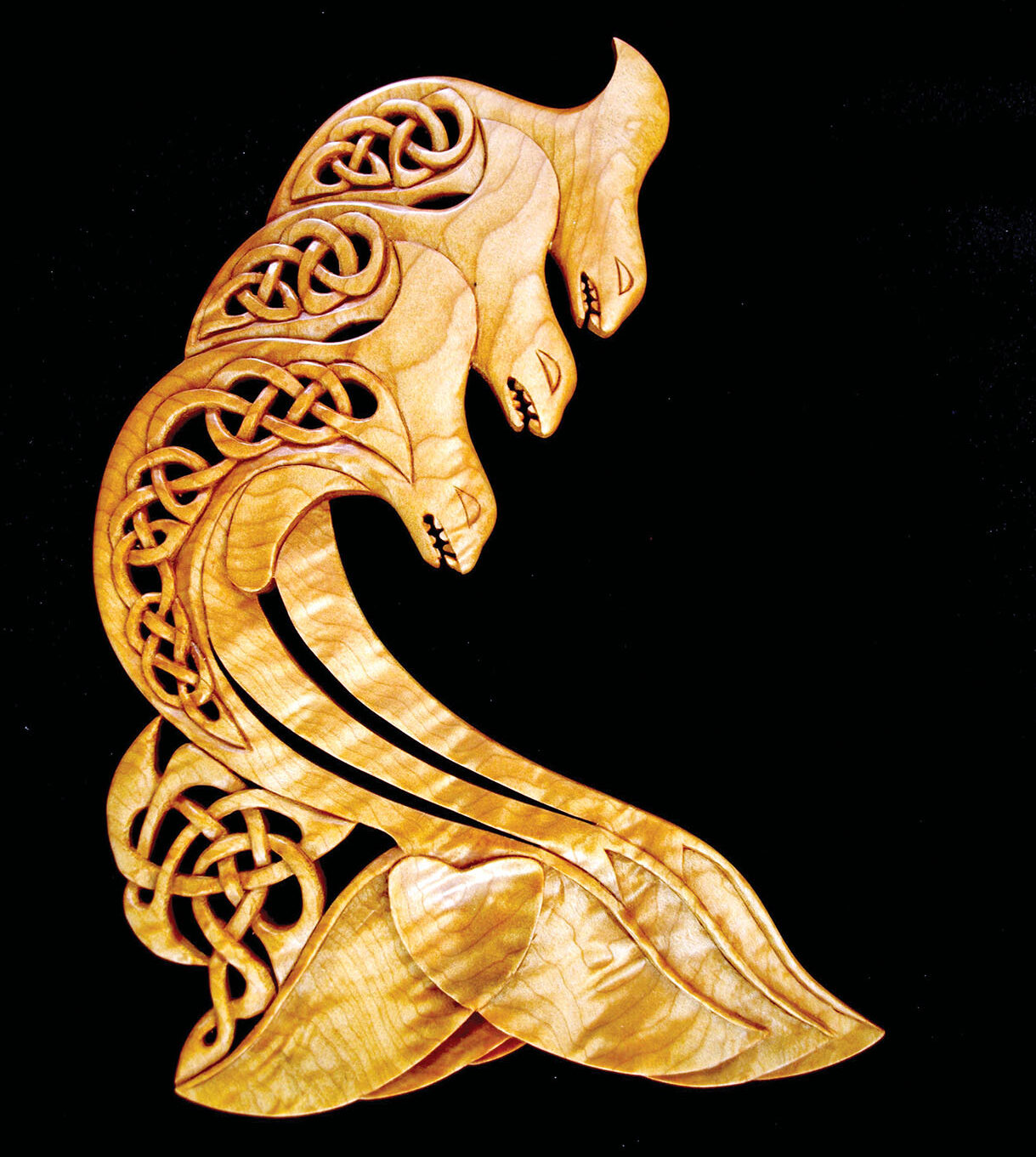
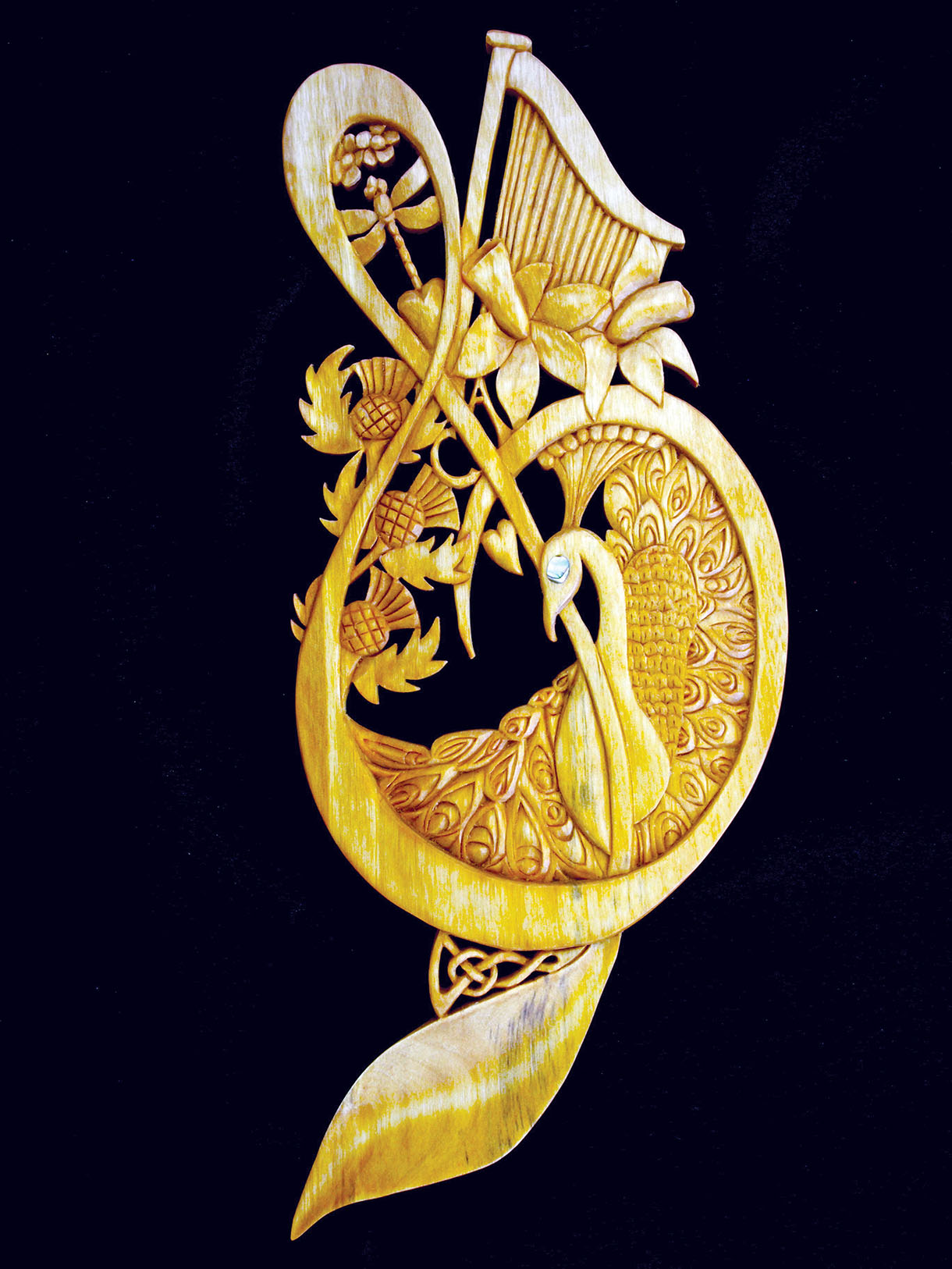
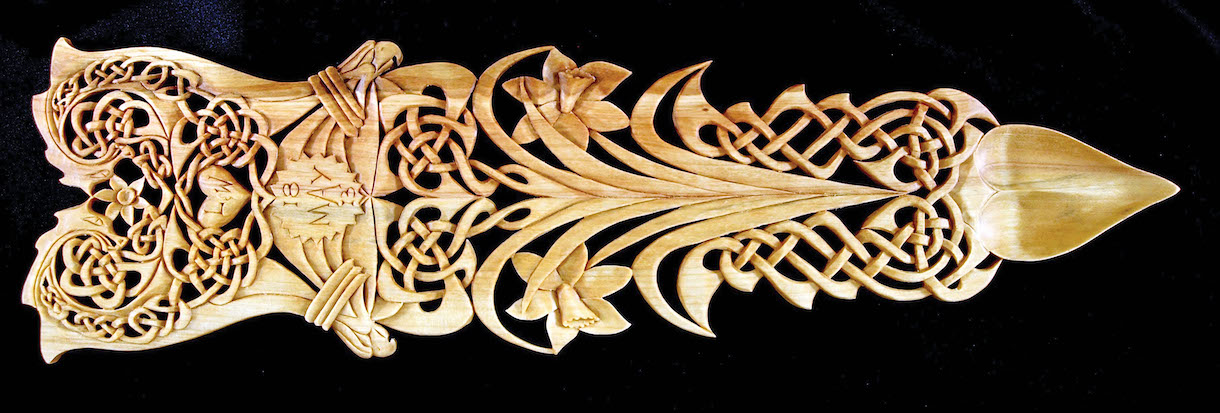
Extreme elegance
Welsh-American carver Laura Jenkins Gorun has taken many of her lovespoons to the extreme of delicacy. A trained artist and self-taught carver, Gorun deliberately avoided studying other lovespoons in order to develop as personal a style as she was able. This is most noticeable in the seeming frailty and extreme slenderness.of her designs, many of which defy physics. Although her designs are often copied, I’ve yet to see any equal her facility for pushing wood to the limits of its capabilities.
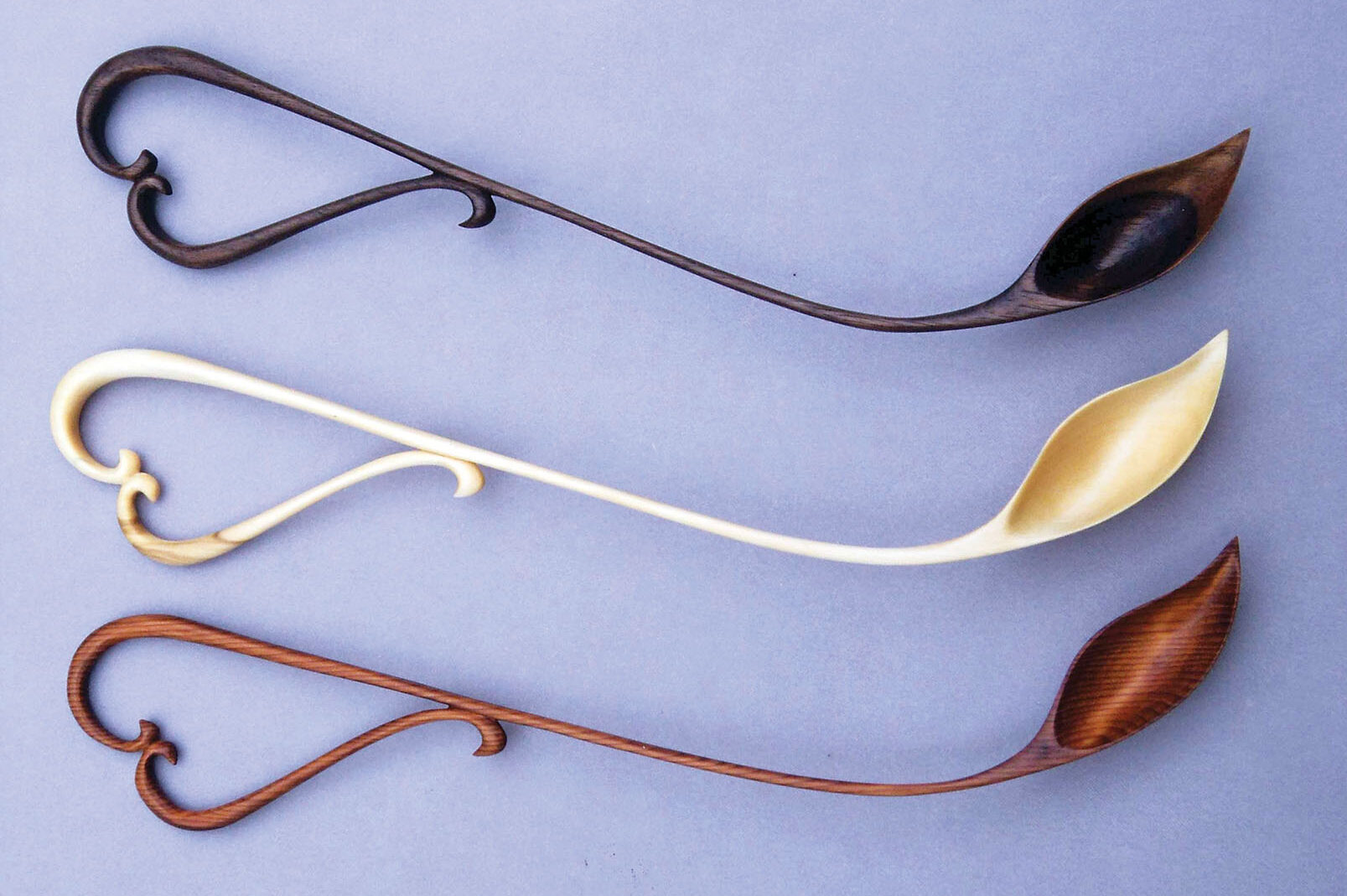
Elegant, slender lines are the hallmark of Laura Jenkins Gorun’s graceful designs as she takes seeming simplicity to the extreme of difficulty
Extreme design
Australian graphic artist and master carver David Stanley’s crisply considered and immaculately crafted pieces elevate design and technique to a whole new level. On Stanley’s spoons, designs often happen on several planes and occasionally the back and front of the spoon bear different images entirely. Although extremely complex and frequently visually busy, Stanley’s designs have an effortless and seamless quality that makes them wonderfully engaging.
As I mentioned previously, there are infinite opportunities for stylistic and technical experimentation open to you when you carve a lovespoon. By refusing to be limited by notions of what is standard or expected, you can help expand this remarkable tradition and keep it relevant for the future.
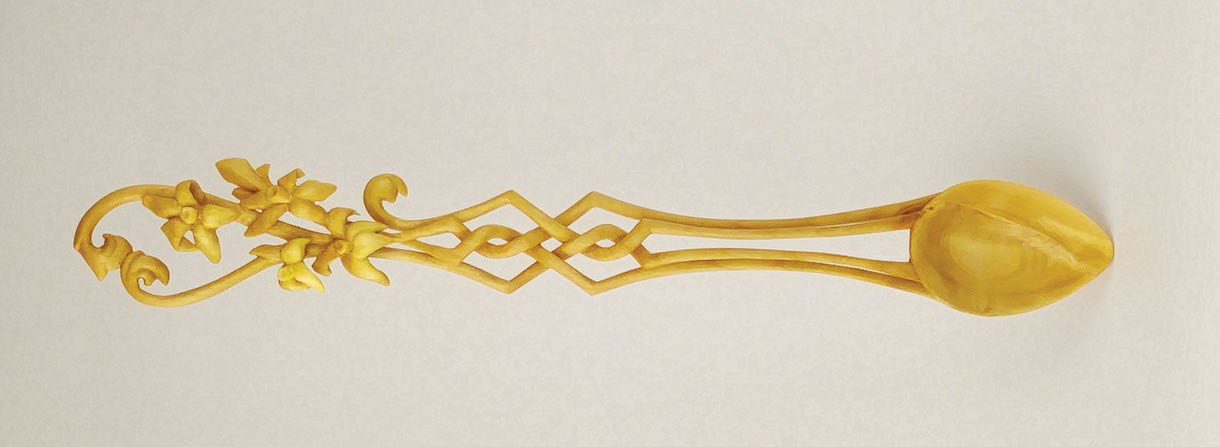
More of Laura Gorun’s graceful designs
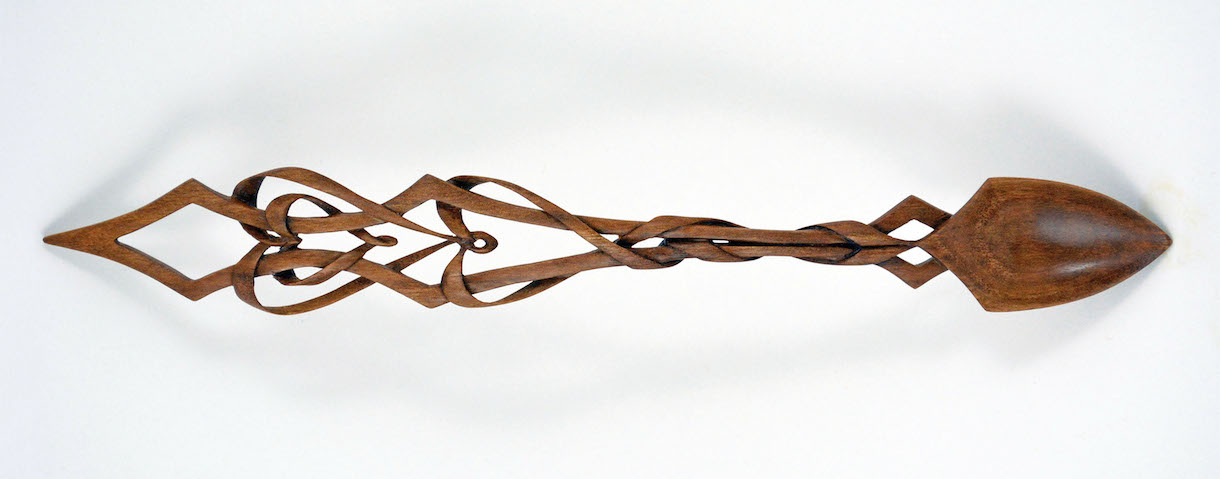
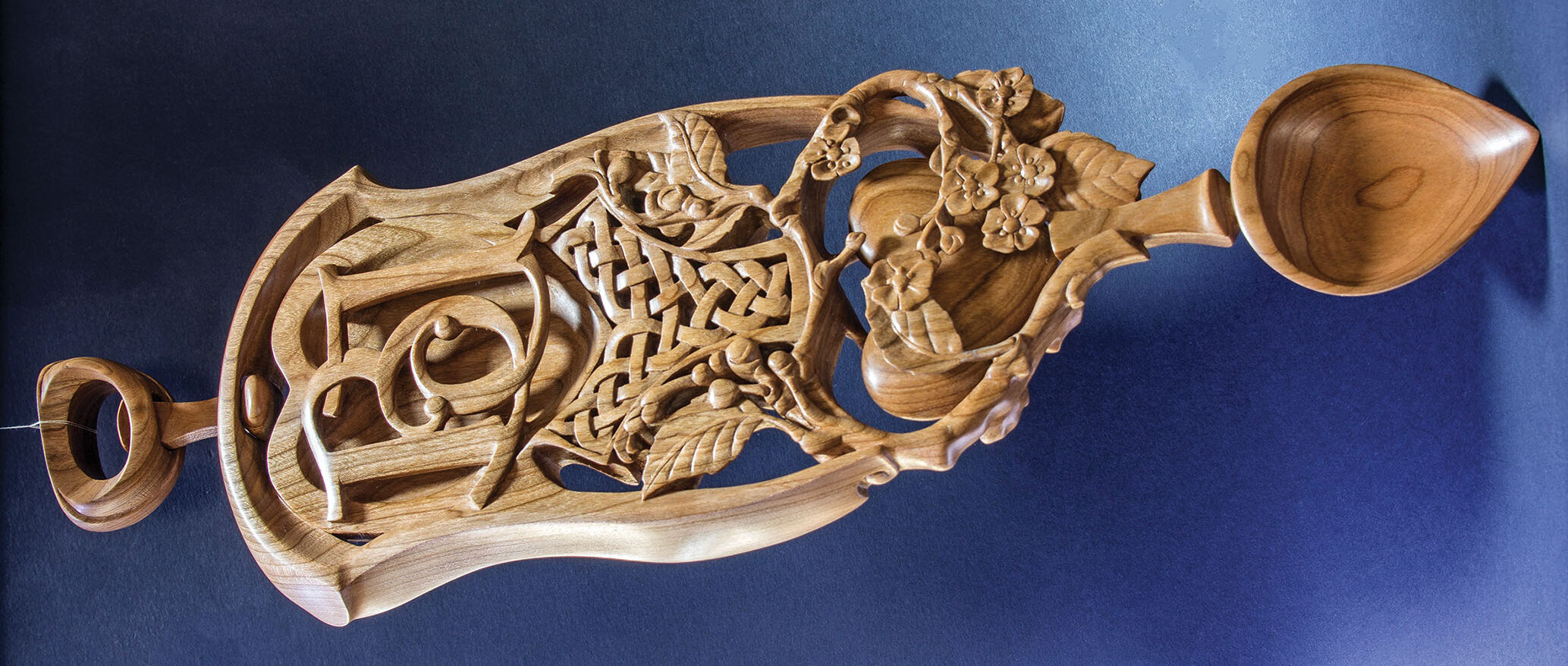
David Stanley’s spoons represent the current apex of lovespoon design and craftsmanship. Flawlessly crafted, they are among the very best extreme lovespoons being carved
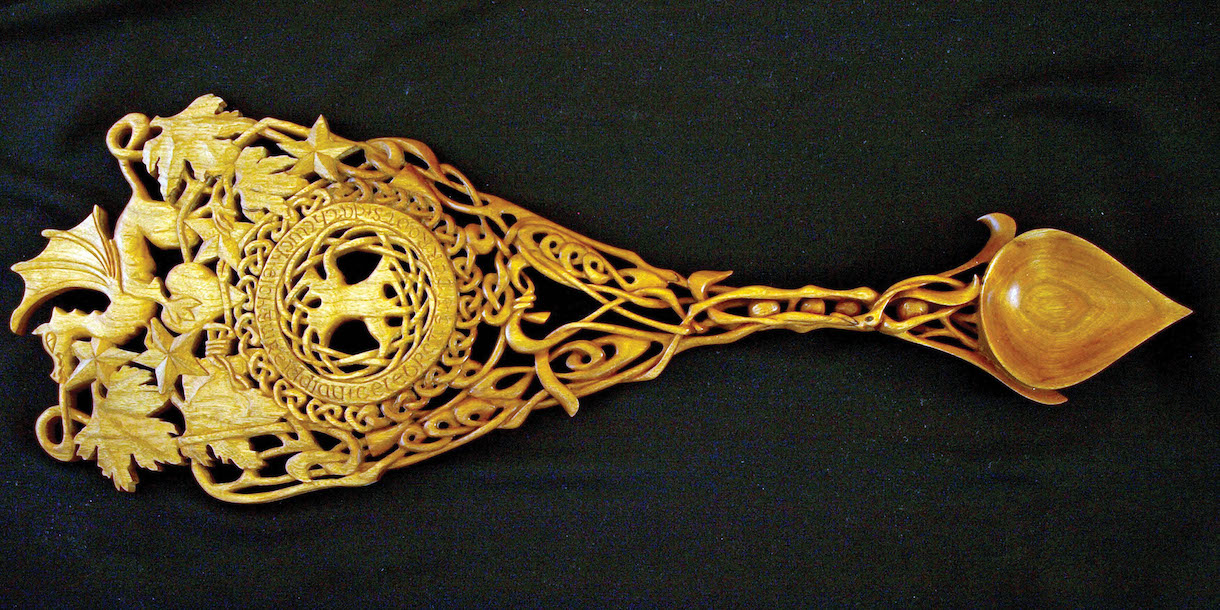
A collaboration between Welsh artist Jen Delyth and carvers David Western and Laura Jenkins Gorun, this lovespoon harmoniously combines several diverse artistic styles and carving techniques to create a beautiful and distinctive piece
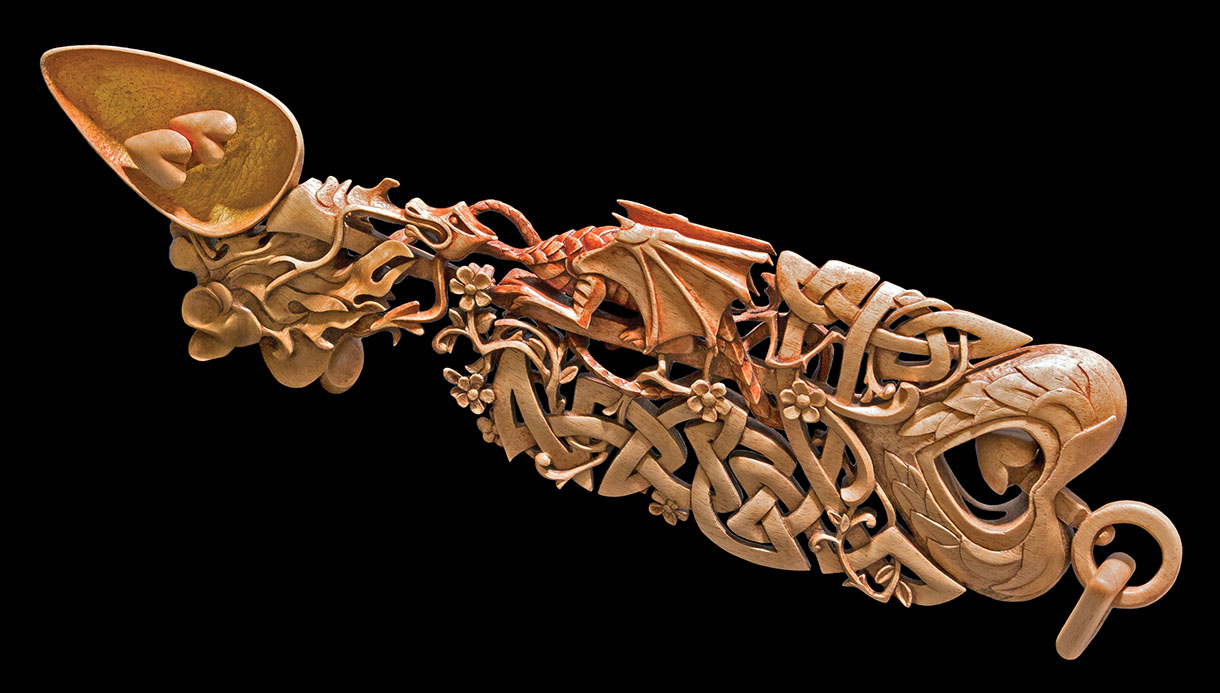
David Stanley Dragon Lovespoon



